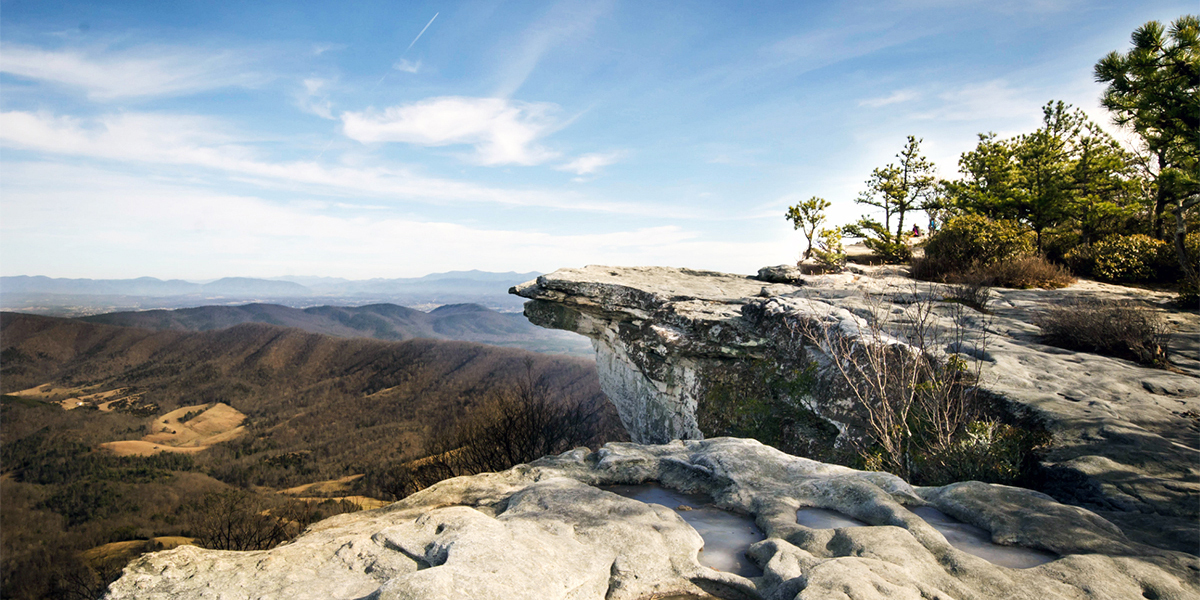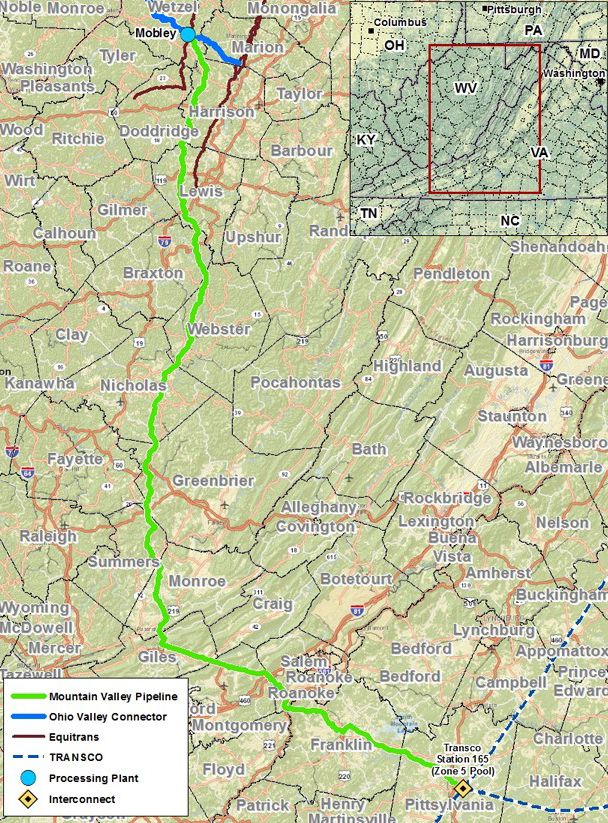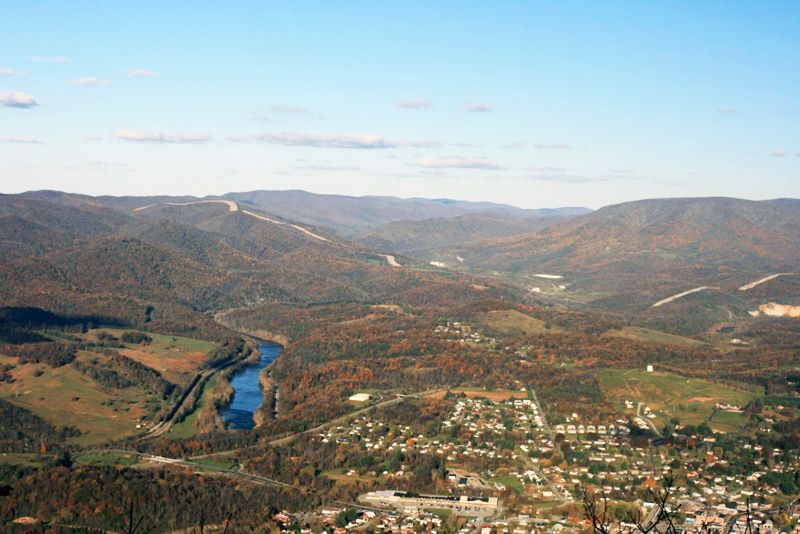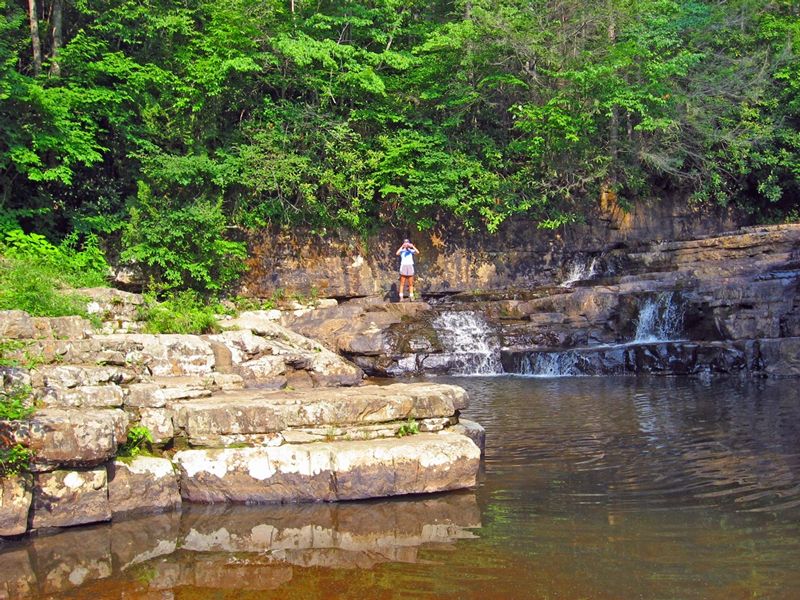

By Caroline Mosley
The proposed Mountain Valley Pipeline would carry natural gas 300 miles from northwest West Virginia to southern Virginia, crossing the Appalachian Trail and clearing trees on its way.
Cutting through one of the most celebrated hiking trails in America, the proposed Mountain Valley Pipeline threatens wildlife habitat, recreational lands and the health of local Appalachia communities, while setting a terrible precedent of building energy infrastructure through our national forests.
The construction of the pipeline sets a dangerous precedent, requiring the clearing of 125 foot wide corridor of forest lands protected by the Forest Service’s Roadless Rule. Under the protection of the Roadless Rule, these unspoiled forest lands are protected from road building, logging, mining and other development.
Starting 90 minutes south of Wheeling, West Virginia, the pipeline would wind south through the state before cutting east across Appalachian Trail and ending 30 minutes north of Danville, Virginia.
Through Dec. 22 the Federal Energy Regulatory Commission (FERC) is seeking public input on the proposed plan to build the Mountain Valley Pipeline. We need to speak up and tell FERC Secretary Kimberly Bose to revise the current plan and more directly address the pipeline’s lasting impacts on the Appalachian Trail and adjacent wildlands, like Brush Mountain Wilderness Area and Peter Mountain Wilderness Area.

We need to speak up for the trail that 3 million Americans enjoy each year. If we don’t, some of the most iconic viewpoints, like Angels Rest, along the Appalachian Trail in Virginia will look out upon an ugly swath of destruction that dissects habitat and threatens waterways.

Your voice is important—FERC will evaluate public input when deciding on a final plan by next spring. We must speak up for the Appalachian Trail and other roadless regions before it’s too late!
A Terrible Example for Our Wildlands
Undermining the Forest Service Roadless Area Conservation Rule sets a dangerous pattern for the nearly 58.5 million acres of wildlands protected from road construction, mining and timber harvesting. This crucial conservation policy protects treasured backcountry land, but powerful logging and energy industries constantly seek to weaken the rule.

If the Roadless Rule can be circumvented for the Mountain Valley Pipeline, it opens up the door for energy companies to build in other roadless areas containing cherished forests and critical wildlife habitat. Right now there are at least four other pipelines currently being considered in the mid-Atlantic region. We need to speak up now or pipelines could soon be criss-crossing the mountains of Appalachia.
We Can’t Destroy Our Natural Heritage for a Needless Pipeline
A 3.4 mile section of the proposed pipeline would slice through Jefferson National Forest, part of one of the largest areas of public lands in the eastern U.S. Popular for hiking, mountain biking and hunting, it is not uncommon to see black bears, deer and songbirds among the 230,000 acres of precious old growth forests that preserve a piece of the Appalachia unmarred by human impacts.

Building a pipeline through the trail would devastate a precious piece of American history. Cutting through the trail, the longest hiking-only footpath in the world, would be a slap in the face to the millions of people visiting the trails that wind through our East Coast’s forests, mountains and valleys.
Do We Even Need Another Pipeline?
A September 2016 report explains existing energy infrastructure—including pipelines—is sufficient for meeting the regional needs of the area.
“Additional interstate natural gas pipelines, like the Atlantic Coast and Mountain Valley projects, are not needed to keep the lights on, homes and businesses heated, and existing and new industrial facilities in production,” wrote the researchers.
Local communities and wildlands will suffer from needless destructive development from a pipeline and become even more dependent on fossil fuels. There is simply no need for a pipeline if it is unnecessary for energy needs and will irreversibly harm a precious part of America’s natural history.
We need FERC to evaluate the region’s need for pipelines and more carefully consider the irreversible impacts of infrastructure on wild landscapes. For 90 years, the Appalachian Trail has been an integral part of our hiking trail history. We cannot let this pipeline take that away and set a dangerous example for the rest of our protected wildlands.
Add your voice: No natural gas pipeline through the Appalachian Trail!

 233k
233k  41k
41k  Subscribe
Subscribe 